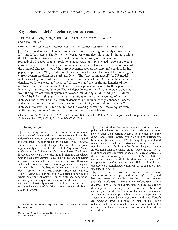摘要
The equivalent ionospheric electric currents in the polar region mainly consist of the DP1 and DP2 systems. The former involves a westward electrojet around midnight, while the later involves a two-cell system with foci on the morningside and eveningside, respectively. In space weather prediction and nowcasting, sophisticated models of the polar currents are needed, but concise and convenient models are also useful to predict or nowcast the principal characteristics of the current systems, such as intensity and position. In this paper, we propose a "key points model'' for outlining the basic features of the polar region current system for different disturbance levels. The "key points model'' (or KP model) includes six key points of the current system: the centers of two DP2 cells, the maximum densities of the eastward and westward electrojets, and the maximum densities of the northward and southward currents. Each of six key points is described by three parameters: intensity, local time, and latitude. The AE-dependences of the 18 parameters are deduced from the equivalent current systems for every 5 min during a 2-d period (18-19 March 1978). The KP model reveals systematic variations of the current systems. When AE increases, the currents and the current densities are simultaneously enhanced linearly, and most of the key points concentrate towards midnight. In addition, when AE increases, the key points K2 and K4 for the evening current cell move equatorward, while the key points K1 and K3 for morning cell move poleward.
- 出版日期2008-2-29
- 单位中国科学院地质与地球物理研究所; 中国科学院地质与地球物理研究所兰州油气资源研究中心
